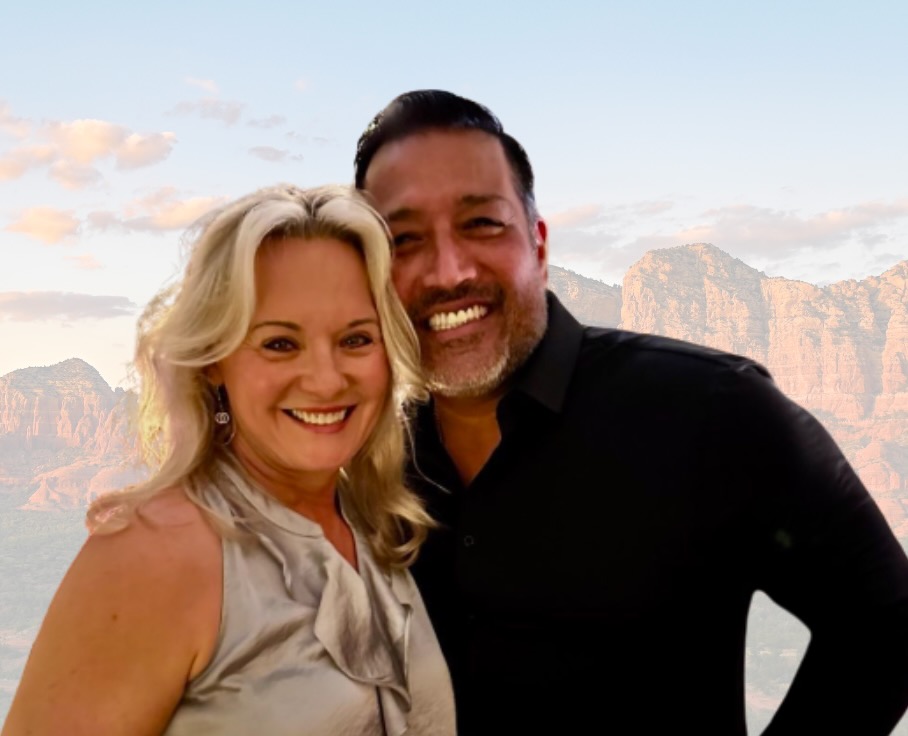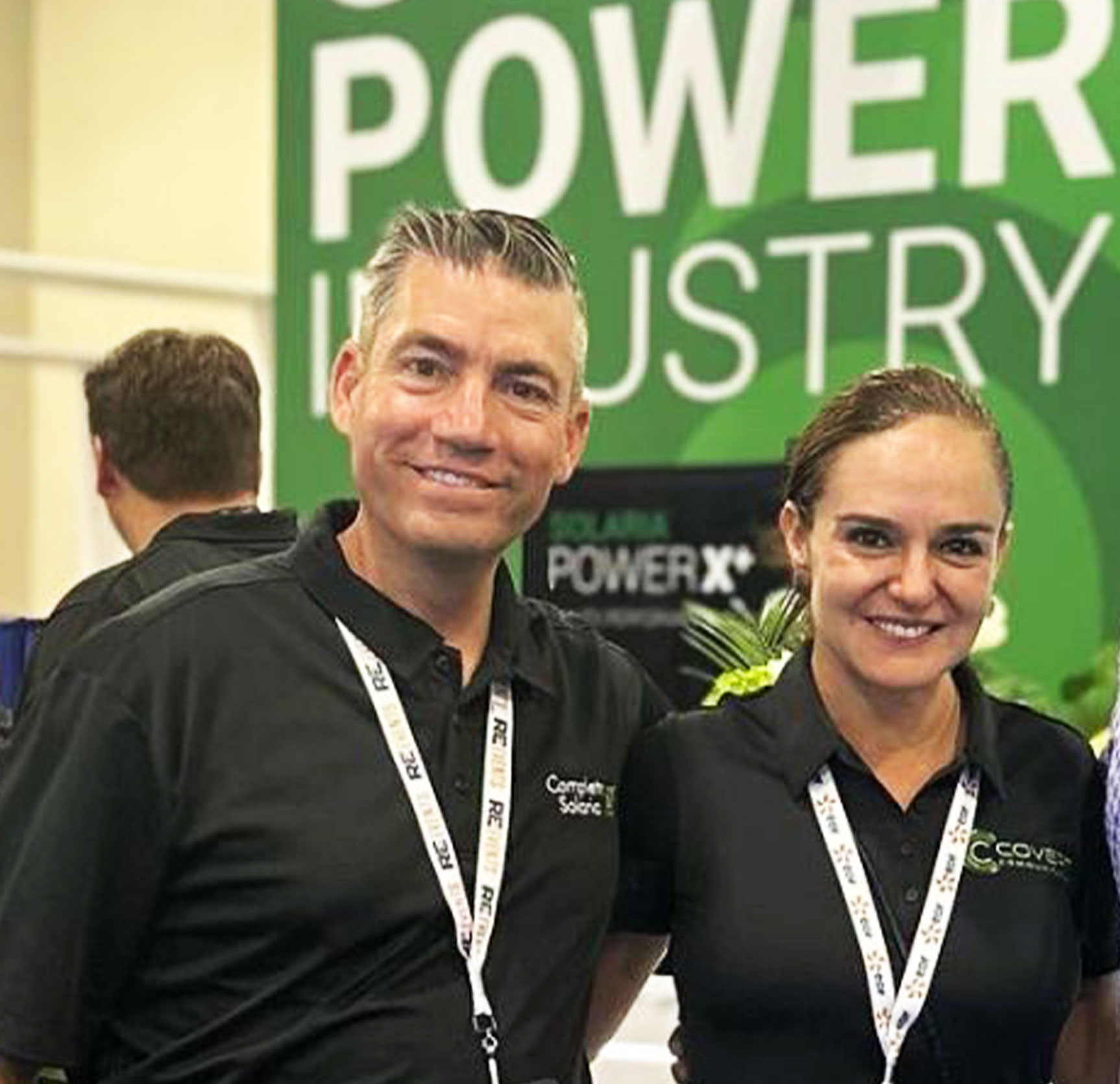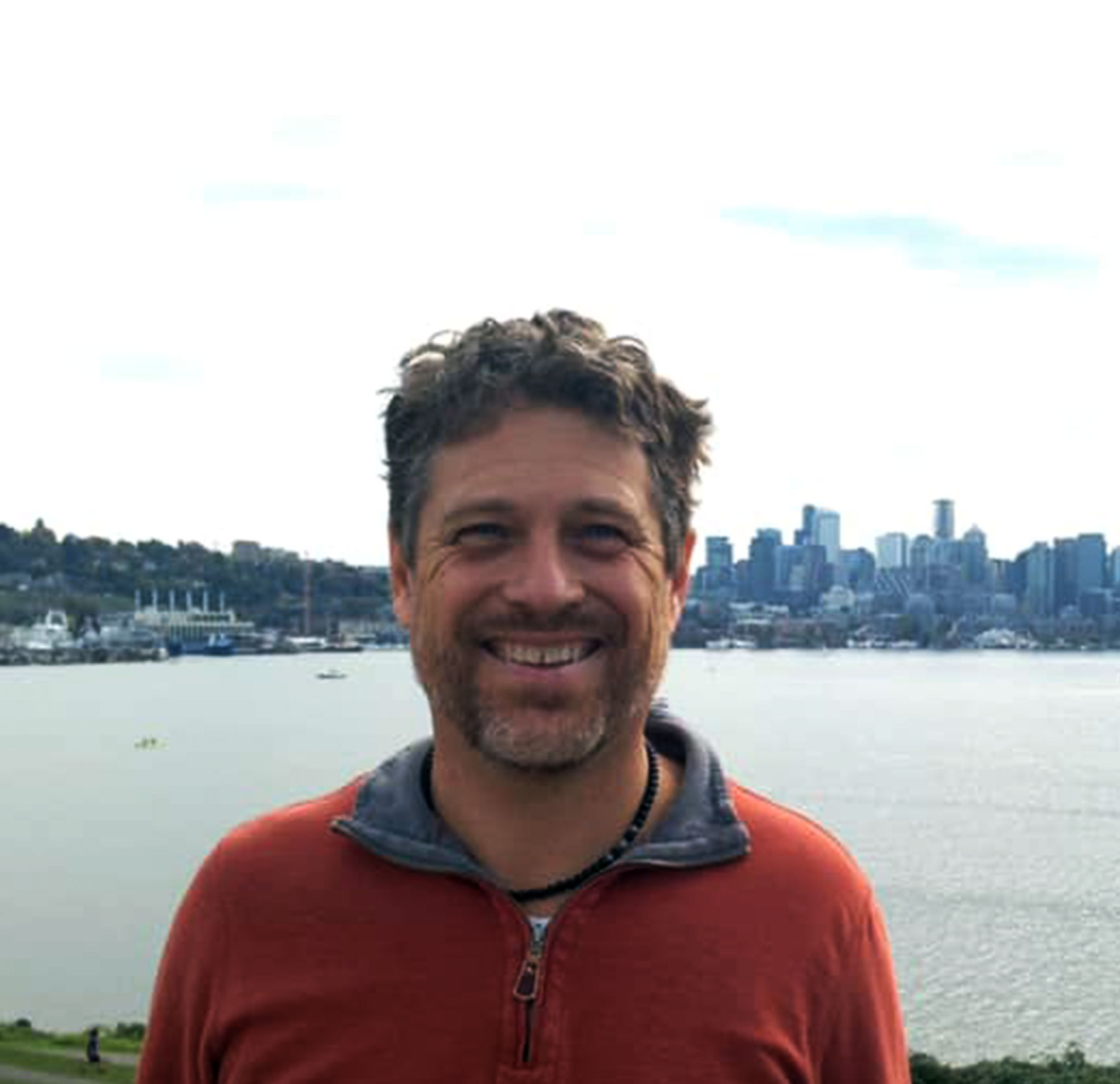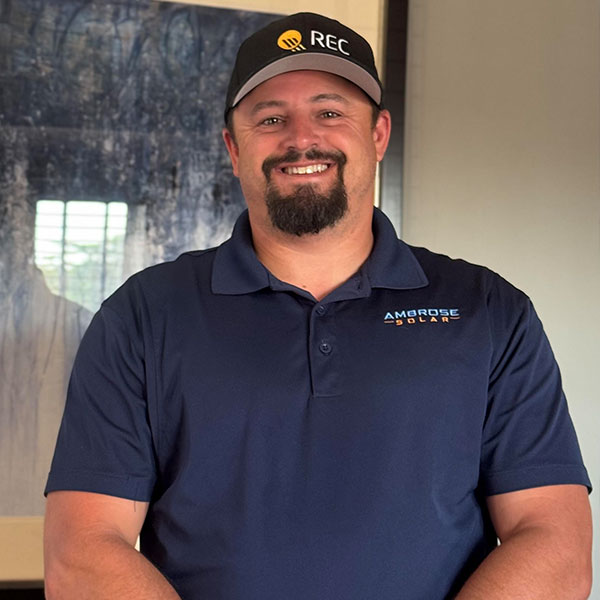How Alex Herrera Scaled Sun Energy Today Into a National Solar Leader
Like many of the leaders featured in this book, Alex Herrera didn’t start where he ended up—and that’s exactly what makes his story worth telling. When he first entered the solar industry, Alex believed the best path forward was residential solar with no credit score minimums—a mission rooted in accessibility and inclusion. But what he quickly discovered was that good intentions don’t always align with good business models. The margins were thin. The risk exposure was high. And the long-term stability just wasn’t there.
So, he pivoted.
Alex turned his attention to commercial and utility-scale solar, where larger deals, long-term infrastructure, and experienced partners created a more sustainable path forward. And when it comes to funding? Alex is not your average bear. He’s built a reputation for using unconventional but strategic tools—like EB-5 “Gold Card” financing and layered deal structures—to get projects off the ground when others get stuck at the gate.
Today, Sun Energy Today operates nationally, with a sharp focus on 10 MW+ projects that serve high-impact sectors like public housing, school districts, resorts, data centers, airports, and municipalities.
Across all of those verticals, one thing unites his best clients:
They want to save money, demonstrate sustainability, and ensure resiliency. But above all, they need to buy power. That’s the core of it. Alex’s job is to ensure there’s a reliable offtaker on the other side of the meter—because when that piece is in place, everything else can be built around it.
Let’s dive in!
Anna: Alex, you’ve scaled Sun Energy Today into a national leader in commercial solar. What makes a project truly worth your time—and what sets you apart in how you pursue it?
Alex: It always starts with the people. Is the person behind the project real? Do they have integrity? I’ve learned that no amount of projected ROI makes up for a lack of trust. If someone’s not upfront or can’t follow through, we walk. That’s always our first filter.
From there, we assess realism—does the deal make financial sense, and can we actually fund it? Then we take a close look at the infrastructure. Do they have the land? The interconnection? The right to build? There’s a lot of smoke and mirrors in this space, so we run every project through what I call the “sniff test.” If something doesn’t add up—like missing permits, unclear ownership, or soft utility commitments—we’re out.
What makes Sun Energy Today different is that we’re diversified and deliberate. We operate across multiple states, sectors, and deal structures. We’re not just an installer—we’re a trusted, connected developer who knows how to move fast without cutting corners. We don’t need a boardroom of approvals to greenlight a project. We know what fits, and we’re not afraid to say no. In fact, we say no to more deals than we say yes to—and that discipline keeps our pipeline strong and our team focused.
We’re also flexible when it comes to deal structure. Some projects are referral-based, where we simply make the connection and earn a commission. Others, we own outright—sometimes for 25 years, sometimes for a shorter term.
A good example of that flexibility involved a recent project where we were initially contracted to own the system for the full 25 years. Partway through negotiations, the customer requested a buyout option at year 10 and asked for it to be built into the agreement.
Normally, I’m not interested in holding an asset that long unless the economics truly work. But in this case, the numbers made sense, the team was reliable, and the infrastructure was solid. They agreed to pay the PPA and handle the O&M, and the structured buyout gave us a clear, defined exit. It passed the sniff test—so we moved forward.
But it’s not just about numbers or scale. For me, this work is about doing the right thing—for the land, for the communities, and for the future. We have a responsibility to build systems that last, to bring clean energy where it’s needed most, and to leave things better than we found them. If I can look back and know that we made a positive impact—lowered emissions, created jobs, helped someone access power they couldn’t before—that’s a win. That’s why I’m in this. That’s what drives me.
Anna: How do you structure financing on these kinds of projects?
Alex: It really depends on the deal. We use every tool in the box—cash, PPAs, traditional loans, and sometimes family offices, which are often attorney-backed private capital groups. But those deals usually come with strings attached—20% equity and interest repayments.
Since they don’t want the tax credits, we use them ourselves—and that’s a huge advantage. We can monetize those credits and use the proceeds to pay down the loan and cover interest without giving up equity or control. It gives us more flexibility in how we finance and operate.
One of the more strategic tools in our toolbox—especially for community-serving solar—is EB-5 financing, soon to be renamed the “Gold Card” program. It’s a federal initiative that allows foreign investors to contribute $1 million to qualifying U.S. projects in exchange for a green card. Think of it like a low-interest, long-term government grant, but privately funded.
The investors aren’t looking for equity or a big payday. Their primary goal is immigration status. So the repayment to the government is interest-only—you don’t have to return the principal in the traditional sense. EB-5 is structured somewhat like a nonprofit; they can’t capitalize on the investment itself, only on the interest income. That’s what makes it so powerful—it lets us build at scale without stacking equity partners or taking on burdensome debt.
Now, to be clear, EB-5 only works in very specific scenarios. The project must serve the public good—such as public housing, schools, clean energy in low-income areas (or Opportunity Zones), workforce housing, or similar infrastructure that creates measurable community impact. EB-5 financing cannot be used for commercial resorts or private data centers. It’s not about profit—it’s about purpose.
Let me give you a hypothetical. If I could get Great Wolf Lodge to go solar—and they agreed to a power purchase agreement—I wouldn’t fund that with family office money. I’d bring in EB-5. They’d provide the capital to build the system, and then Great Wolf would pay us monthly for the energy, just like they would with any utility. Meanwhile, EB-5 would be repaid via the interest on the loan, and we’d retain full control of the system.
But here’s the catch: you need to work with a certified EB-5 representative to do it right. They handle the paperwork—engineering designs, financial models, job projections, community benefits—all the documentation that proves your project qualifies. The project either needs to be in a designated Opportunity Zone, or you need to demonstrate that it will create meaningful job growth and serve a disadvantaged community.
We’re actively exploring EB-5 for solar farms that support public institutions—like school districts, public housing authorities, or nonprofits serving at-risk communities. When everything lines up, EB-5 is one of the most powerful and underutilized funding mechanisms in clean energy. And it’s tailor-made for projects that are about people—not just profits.
Anna: You mentioned being part of 48E and 45U—how do those incentives affect your project pipeline and long-term strategy?
Alex: They’re a game-changer. These two provisions under the Inflation Reduction Act—48E and 45U—are reshaping the landscape for commercial solar and storage. 48E is the Investment Tax Credit (ITC) for clean energy projects, and it’s replacing the old Section 48 ITC with new technology-neutral rules. 45U is the Production Tax Credit (PTC) version—it gives ongoing credits based on how much clean electricity you generate over time. The beautiful thing is, we can now pick which one works better financially for each project.
They both start strong, but they begin to phase down after 2031, which creates urgency—and filters out the noise. These programs are built for scale, not for small boutique installers. There’s no official cutoff, but let’s be honest: anything under 10 MW probably won’t pencil out once you stack up interconnection costs, compliance, insurance, and all the engineering involved.
That’s the biggest shift—we’re seeing a clear market signal: “If you’re going to build clean energy, build it at scale.” And that’s where we’re already positioned. We’re doing 50 MW, 100 MW, and even 600 MW solar farms. We know how to get the financing, we know how to manage the stakeholders, and we know how to hit the deadlines before these tax credits taper off. Smaller players might not have the runway—or the relationships—to make that happen.
So yeah, 48E and 45U are huge. But they’re not just tax credits. They’re a competitive sorting mechanism, and the clock is already ticking.
Anna: So with credits like 25D, 30D, 30C, and 45V being eliminated—and transferability ending soon—how can the industry keep momentum without relying on incentives?
Alex: Let’s be real—this is a stress test for the entire industry. These cuts, especially the EV infrastructure and hydrogen credits, hit newer sectors hard. A lot of companies built projections around those incentives. Now they’re being told to recalculate.
But here’s the thing—this always happens. Every few years, the rug shifts. That’s why our team never chases short-term hype. We focus on infrastructure that will make sense even when the incentives fade.
The loss of transferability after 2026 is especially critical. That tool made it easier for smaller players to monetize tax credits without needing a tax equity investor. Without it, you’ll see more consolidation. Fewer freelancers. And that’s not all bad—it forces the industry to mature.
So how do we keep momentum?
- Bank on fundamentals. Cheap power still wins. If you can sell clean electricity cheaper than the grid, you’re still in business.
- Build with partners who are in it for the long haul. Investors, landowners, off-takers—people who get the bigger picture.
- Start creating hybrid values. We’re combining solar, storage, EV infrastructure, and land-use deals like co-location with agriculture. It’s not about one credit or one product anymore—it’s about layering value across sectors.
Honestly, this is a moment of clarification. The fluff is getting cut. The builders are staying. And if you’ve got a team that can think strategically, stack deals smartly, and find the value without relying on incentives—you’re going to win. Not because of Washington. But because your business was built to last.
Anna: When you’re evaluating large-scale solar opportunities, how important is long-term operations and maintenance—and who are your ideal project partners?
Alex: O&M is part of the conversation, but it’s not our primary driver right now. We’re not in the business of rescuing “orphaned” projects or taking on someone else’s long-term headache unless the numbers really work. If we’re going to commit to owning and maintaining a system for 25 years, the return on investment should be clear, the risks manageable, and the relationship solid. Otherwise, we’re happy to play a different role—structure the deal, connect the parties, and walk away with everyone winning.
As for the types of projects we pursue, we focus on scale. 10 megawatts is our minimum, and there’s no ceiling on the high end. That filters out the noise and helps us stay focused on deals that move the needle. Our ideal partners are people who understand the value of that scale—resorts, public infrastructure, affordable housing developments, airports, and utility-scale offtakers. We’re not chasing shiny objects. We’re looking for projects that create real, lasting value—for the landowner, the buyer, and the community.
Take our 600 MW solar farm in New Mexico—8,600 acres, $1.2 billion in infrastructure, and over $300 million in tax credits. That’s a serious project with serious impact. Or our parking structure installations in Louisiana, where we’re converting underutilized real estate into energy assets.
In Arizona, we’re purchasing a property that includes a working dairy farm. The rancher wanted to continue operations, so we structured the deal for him to lease the land from us—allowing his business to stay active while we develop a solar farm on-site. That’s the kind of win-win we aim for.
At the end of the day, it’s not about whether we’ll babysit a system for two decades. It’s about whether the entire project ecosystem makes sense—the partners, the economics, the location, and the use case. If those pieces line up, we’re all in. If not, we pass—no hard feelings.
Anna: You mentioned you’re exploring EV charging infrastructure. What’s the opportunity there?
Alex: Massive—but still early. A Level 3 Supercharger setup runs around $100,000 installed, so you really have to know your numbers. With the current incentives—a 30% federal tax credit, plus another 10% if the project is in a low-income zone—these projects can make financial sense. That’s up to $40,000 off the top, which is critical when you’re scaling across multiple sites.
We had a strong deal lined up with the University of Louisiana system, specifically at LSU. They were offering us 10 acres on campus—not to own, but to build a solar carport with at least 100 EV chargers. That’s a big footprint and a big statement. The project was designed to tap into those same tax credits, leverage grid power and solar generation, and sell that energy at a premium.
To give you an idea of the potential, you might be buying power at $0.11 per kWh and turning around and selling EV charging at $2.50 to $6.25 per kWh, depending on the location and demand. That’s a compelling margin—on paper.
But here’s the catch: if the tax credits go away or phase down after 2031, a lot of these projects won’t pencil out anymore. Without that 30–40% upfront incentive, your ROI timeline stretches way out—especially when you factor in infrastructure costs, permitting, insurance, battery storage, and utility interconnection fees. If the economics don’t work, the only viable projects will be in high-traffic zones—like airports, universities, or major commercial centers. Everyone else? They’d need to charge outrageous rates or scrap the idea entirely.
That’s why this space is still in its infancy. The tech is advancing fast, especially with graphene-based supercapacitor batteries. These are not your standard lithium systems. A supercapacitor fully charges in 15 minutes and discharges 100% of its stored energy—which means the EV charger itself can go from full to empty and be ready again in another 15 minutes. Compare that to lithium: it only discharges about 70%, and it takes a minimum of 90 minutes to fully recharge once drained. That’s a huge bottleneck in high-traffic charging locations.
With supercap batteries, we pull power from both the grid and the solar carport. The system is constantly feeding the EV charger, and once it’s empty, it can be brought back online almost instantly. That kind of turnaround time is what makes the business model viable. It keeps the energy flowing and avoids long wait times for drivers—and more importantly, for revenue generation.
So yes, we’re exploring it. The opportunity is real, but it’s also fragile. Without policy support and incentive continuity, most of these projects won’t survive the numbers. We’re in—but we’re moving cautiously and strategically, waiting for the market and regulations to mature.
Final Summary: When the Mission Meets the Math
If there’s one thing Alex Herrera understands, it’s that the solar industry is unpredictable. Incentives shift. Policies change. Projects stall. The only constant is uncertainty—and the people who thrive are the ones who stay flexible, think creatively, and lead with integrity.
As the founder of Sun Energy Today, Alex doesn’t just build solar projects—he builds structures that can weather the ride. From commission-only deals to long-term ownership, from tax equity to EB-5 “Gold Card” financing, he has a rare talent for finding the model that fits, even when the landscape is shifting beneath his feet.
What we learned from Alex is this: there is always a way forward—if you’re willing to get creative, stay grounded, and keep asking the right questions. Even if the tax credits expire, even if the market tightens, the ones who know how to structure deals with trust, clarity, and vision will keep building.
Because on The Solar Coaster, it’s not about avoiding the ups and downs.
It’s about knowing how to ride.






